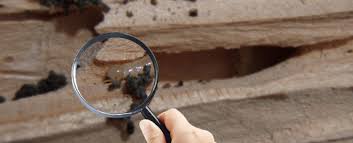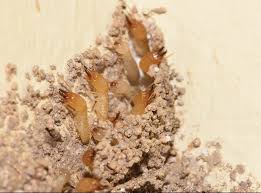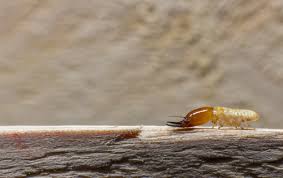More About Termite Control Average Cost
Termite infestations in homes will often go undetected by homeowners for years as it is hard to distinguish evidence of action. Termites will hide in walls or in crawl spaces or in other inaccessible areas within a home. They are sneaky. They dont want to be found or even be out in sunlight. .
Most termite species are native to North America. Formosan termites are the only species which has been transported to U.S. after World War II and are found primarily in California, Florida and along the Gulf Coast.
Termites have three body segments (head, thorax, and abdomen) that are joined widely, unlike many ants. Species aside, termites are divided into the following broad groups:
Termite larvae are extremely small and white in color. The immatures are cared for by the other termites in the nest until they grow into a reproductive or worker. Whether they turned into a reproductive or worker depends on the needs of the colony and will be determined during molting.

Getting The Termite Control At Home To Work
Termites are identified in a couple of different ways. The primary thing that people need to keep in mind is that many times to find evidence of activity you really need to conduct a comprehensive termite inspection.
Termite droppings (Frass)A pile of feces pellets can be indicative of a termite infestation. The termite droppings often resemble sawdust, as the stool is comprised of the wood the termites consume.
SwarmersTermite swarms will be the #1 way that most homeowners recognize that they have a termite infestation. These winged termites emerge from nests in large groups. Individuals will see these winged insects pop out and fly around in swarms near a home. Swarmers are looking to partner and contact the soil.
The smart Trick of Termite Control Average Cost That Nobody is Talking About
Mud tubesFor subterranean termites, you can identify action by identifying mud tubes (also called foraging tubes) that termites use for transportation from dirt to cellulose material (AKA your home ). They will build mud tubes whenever they will be subjected to light and predators. In this manner they have a secure travel way to get from Point A to Point B..
You can often find termites on foundation walls at which there is an expansion seam where they can get at the structural timber http://innovativepestcontrol.com.au/ that is resting on the top of the foundation (basement walls or crawl space walls). On occasion you will find termites in the corner of the joists and also the header planks in the substructure of a home.
Termite galleries and ruined woodAnother way you can identify termite activity would be to examine damaged timber for termite galleries. For people that are not trained, it can be challenging to perform. Generally, subterranean termite galleries proceed with the grain of this timber. These galleries may often contain mud. Termites want to maintain an optimal humidity/moisture level wherever theyre traveling since they desiccate relatively easily.
Termite galleries are typically found on the substructure of a property like the basement or even a crawlspace. If you examine the structures header board and floor joists that rest upon the foundation wall, then you may be able to identify the gallery. At that point in time, its highly recommended to call in a professional.
Fascination About Termite Control Average Cost
Drywood termites are a tiny bit different. They dont originate from use this link the ground. They actually gallery out and live in the wood theyre infesting and feeding on. In areas where drywoods are prevalent, you may often find them infesting attics, ceiling joists, roof rafters, on the wooden exteriors of houses, wood poles, wood groove boards, exposed rafter tails and other wooden constructions in and around a home.You will not find subway in drywood termite galleries but you'll find fecal pellets.
The pellets almost look like heavy grain sand. The color of drywood termite pellets can fluctuate depending on the kind of wood they are infesting on. .
Depending on where you live in the United States, the termite pressures faced may be quite different. In the United States, there are approximately 50 species of termites, only 20 of which might be of concern for structures.Subterranean termites are the most common species of termites in many areas in the U.S.

Top Guidelines Of Termite Control At Home
In states like California and Florida, drywood termites are only as prevalent as subterranean termites. .

Termites consume cellulose material. They'll feed on anything that contains cellulose. Most houses are constructed of conventional lumber that contain cellulose. Termites also have been known to feed on paper, cardboard, cotton tops or anything that contains cellulose as a food source.